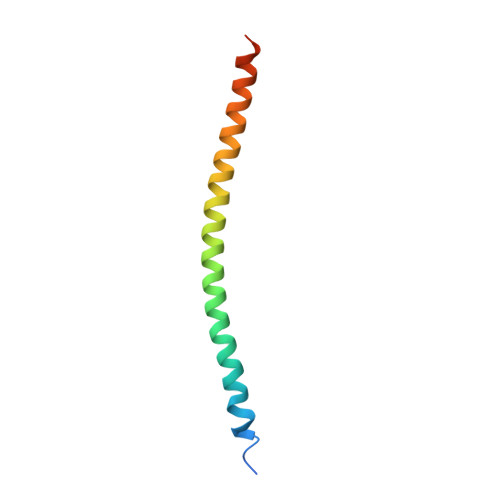Early endosomal SNAREs form a structurally conserved SNARE complex and fuse liposomes with multiple topologies
Zwilling, D., Cypionka, A., Pohl, W.H., Fasshauer, D., Walla, P.J., Wahl, M.C., Jahn, R.(2007) EMBO J 26: 9-18
- PubMed: 17159904
- DOI: https://doi.org/10.1038/sj.emboj.7601467
- Primary Citation of Related Structures:
2NPS - PubMed Abstract:
SNARE proteins mediate membrane fusion in eukaryotic cells. They contain conserved SNARE motifs that are usually located adjacent to a C-terminal transmembrane domain. SNARE motifs spontaneously assemble into four helix bundles, with each helix belonging to a different subfamily. Liposomes containing SNAREs spontaneously fuse with each other, but it is debated how the SNAREs are distributed between the membranes. Here, we report that the SNAREs mediating homotypic fusion of early endosomes fuse liposomes in five out of seven possible combinations, in contrast to previously studied SNAREs involved in heterotypic fusion events. The crystal structure of the early endosomal SNARE complex resembles that of the neuronal and late endosomal complexes, but differs in surface side-chain interactions. We conclude that homotypic fusion reactions may proceed with multiple SNARE topologies, suggesting that the conserved SNARE structure allows for flexibility in the initial interactions needed for fusion.
Organizational Affiliation:
Department of Neurobiology, Max-Planck Institute for Biophysical Chemistry, Göttingen, Germany.

















